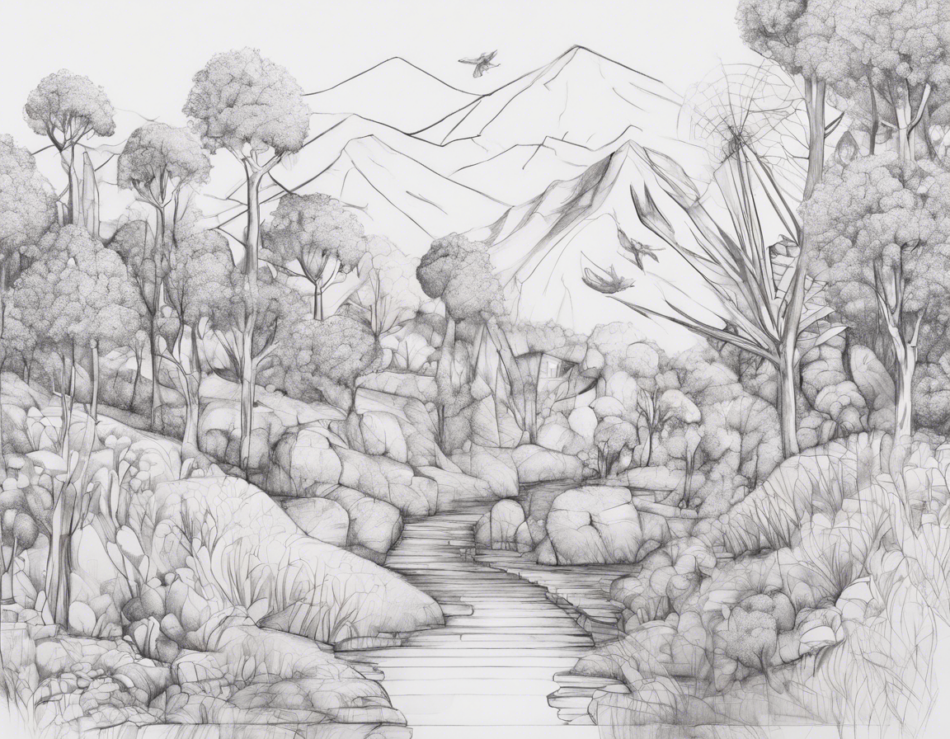Are you looking to enhance your drawing skills but feel intimidated by the thought of complex techniques and intricate details? Fear not – drawing can be an enjoyable and accessible activity for anyone, regardless of prior experience or talent. With the right mindset and a few simple tips and techniques, you can master the art of easy drawing and unleash your creativity. In this comprehensive guide, we will explore various strategies and practices to help you improve your drawing abilities, develop your artistic style, and gain confidence in expressing yourself through visual art.
Understanding the Basics of Drawing
Before diving into more advanced techniques, it is essential to grasp the fundamental principles of drawing. These basics serve as the building blocks for creating more intricate artworks. Here are key concepts to keep in mind:
1. Observation:
- Observation is the foundation of drawing. Train your eye to see shapes, proportions, and details accurately.
2. Line Quality:
- Experiment with different types of lines – curved, straight, dashed, etc., to add variation and interest to your drawings.
3. Shapes and Forms:
- Break down complex subjects into simple shapes and forms. This simplification makes it easier to capture the essence of what you are drawing.
4. Light and Shadow:
- Understanding how light interacts with objects helps create depth and dimension in your drawings.
Tips for Improving Your Drawing Skills
Now that you have a good grasp of the basic principles, let’s explore some tips and techniques to enhance your drawing skills:
1. Practice Consistently:
- Like any skill, drawing improves with practice. Set aside regular time for drawing exercises to build muscle memory and improve hand-eye coordination.
2. Start with Simple Subjects:
- Begin by drawing simple objects like fruits, household items, or flowers. As you gain confidence, move on to more complex subjects.
3. Use Reference Images:
- Working from reference photos can help you understand proportions, shapes, and details better. Practice sketching from observation to improve your drawing accuracy.
4. Experiment with Different Mediums:
- Don’t limit yourself to just pencils. Explore charcoal, pen, markers, or digital drawing to discover which medium suits your style best.
5. Join Drawing Communities:
- Engage with fellow artists in online or local drawing communities. Sharing your work, receiving feedback, and learning from others can significantly boost your skills and motivation.
6. Take Breaks:
- Avoid burnout by taking regular breaks during drawing sessions. Stepping away and returning with fresh eyes can help you spot areas for improvement.
Techniques for Easy Drawing
Beyond tips, there are specific techniques you can employ to make drawing more accessible and enjoyable:
1. Gesture Drawing:
- Practice quick gesture drawings to capture the essence of a subject’s movement and form. Focus on fluid, expressive lines rather than precise details.
2. Contours and Negative Space:
- Pay attention to contour lines and negative space around objects. This technique helps improve accuracy and spatial awareness in your drawings.
3. Blocking In:
- Start by blocking in basic shapes before adding details. This approach helps establish proportions and composition early on.
4. Grid Method:
- Divide your reference image and drawing surface into a grid to help with proportions and placement.
5. Layering and Blending:
- Experiment with layering colors and textures to create depth and richness in your drawings. Utilize blending tools or techniques for smoother transitions.
Frequently Asked Questions (FAQs)
1. How can I overcome a lack of inspiration for drawing?
- Try exploring new environments, seeking inspiration from art books or online galleries, or setting specific drawing challenges for yourself.
2. What are some good warm-up exercises for drawing?
- Quick gesture drawings, contour sketches, and doodling are excellent warm-up exercises to loosen up your hand and mind before diving into more detailed work.
3. How important is it to study anatomy for drawing?
- Understanding basic human anatomy can significantly enhance your figure drawing skills. It helps in capturing realistic proportions, movement, and expressions.
4. Should I focus on drawing from imagination or observation?
- Both are essential. Drawing from observation enhances your technical skills, while drawing from imagination fosters creativity. Balance between the two for a well-rounded practice.
5. How can I stay motivated when facing creative blocks?
- Experiment with new techniques, take a break and engage in other creative activities, seek feedback from peers, or revisit past successful drawings for inspiration.
Drawing is a skill that anyone can develop with dedication and practice. By mastering the basics, incorporating helpful tips and techniques, and continuing to explore and experiment with your art, you can embark on a fulfilling journey of self-expression and creativity through drawing. Remember, the key is to enjoy the process and keep pushing your boundaries to grow as an artist. Happy drawing!
